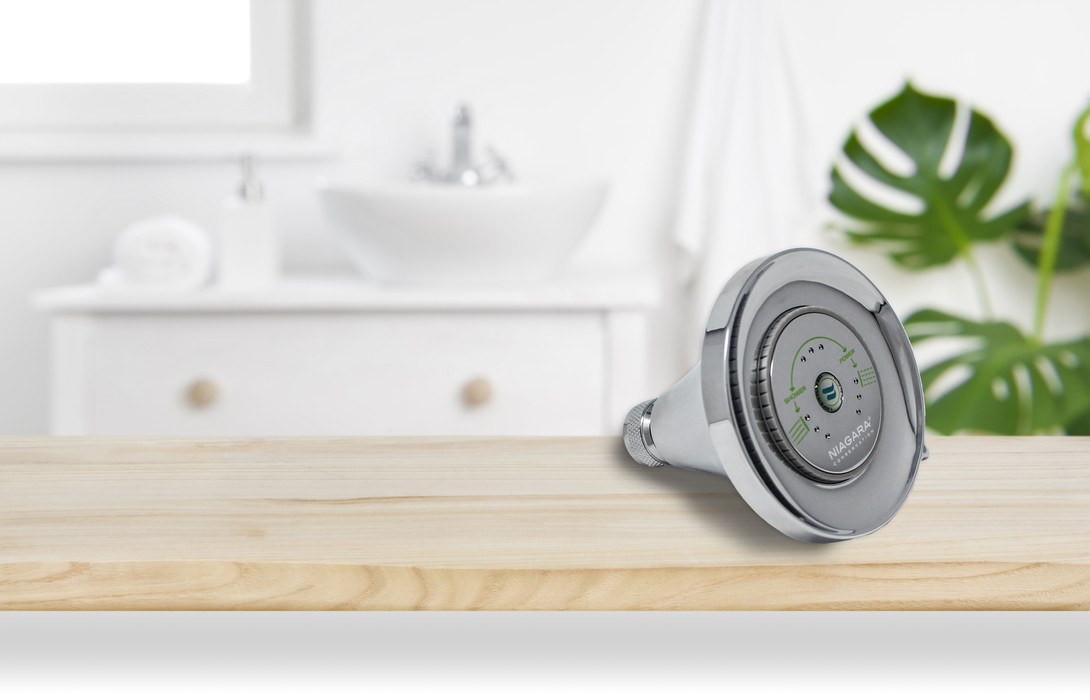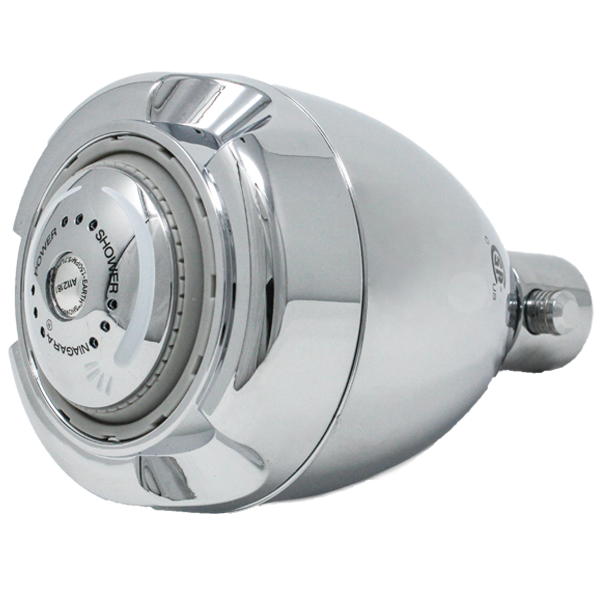Nothing removes the chill of a fall morning quite like a nice, hot shower. It’s one of life’s simplest pleasures, but it’s costly. According to the US EPA, the average shower uses 10 gallons of water , and just heating the water can eat up to 18% of a utility bill.
Lucky for us that technology has come a long way since 1992, when the federal government started regulating the gallons per minute (GPMs) showerheads can use . We no longer have to choose between comfort (wonderful but wasteful hot showers) and cost-effectiveness (the “low flow” showerheads of the past that left shampoo residue in your hair).
Today’s energy efficient showerheads deliver forceful streams and enough heat to melt the frost that formed on your toes as you padded down the hallway to the bathroom. So, there are plenty of models that you and your customers can use to save water and money. Below is a short guide to help you find them.
The most important thing to look for is the
EPA’s WaterSense® label.
Showerheads that earned this badge perform at least 20% better than average
products in each category, and an independent third party did research to back
up its
 claims.
claims.
So, how does a “20% better” showerhead perform? It must use no more
than 2.0 GPM (gallons per minute) of water while also ensuring optimal spray
force and spray coverage. Many models, though, exceed these standards, like
those from
AM
Conservation®.
The Tri-MaxTM fixed-mount showerhead, which features
three settings for soaping, showering, and rinsing, gets down to 0.5 GPM. Customers
 looking for a more luxurious shower should check out the Earth® Luxe line. They
have an adjustable 9-jet turbo massage spray, and models ranging from 1.25 to
1.75 GPM.
looking for a more luxurious shower should check out the Earth® Luxe line. They
have an adjustable 9-jet turbo massage spray, and models ranging from 1.25 to
1.75 GPM.
Consider Customer Behavior
So, Hop In!
Thanks to engineering marvels like these, you don’t have to cut down on the quality of beloved chill-busting showers. The energy and cost savings will more than pay for the one-time purchase price. Want to learn more or order? Let’s discuss!

